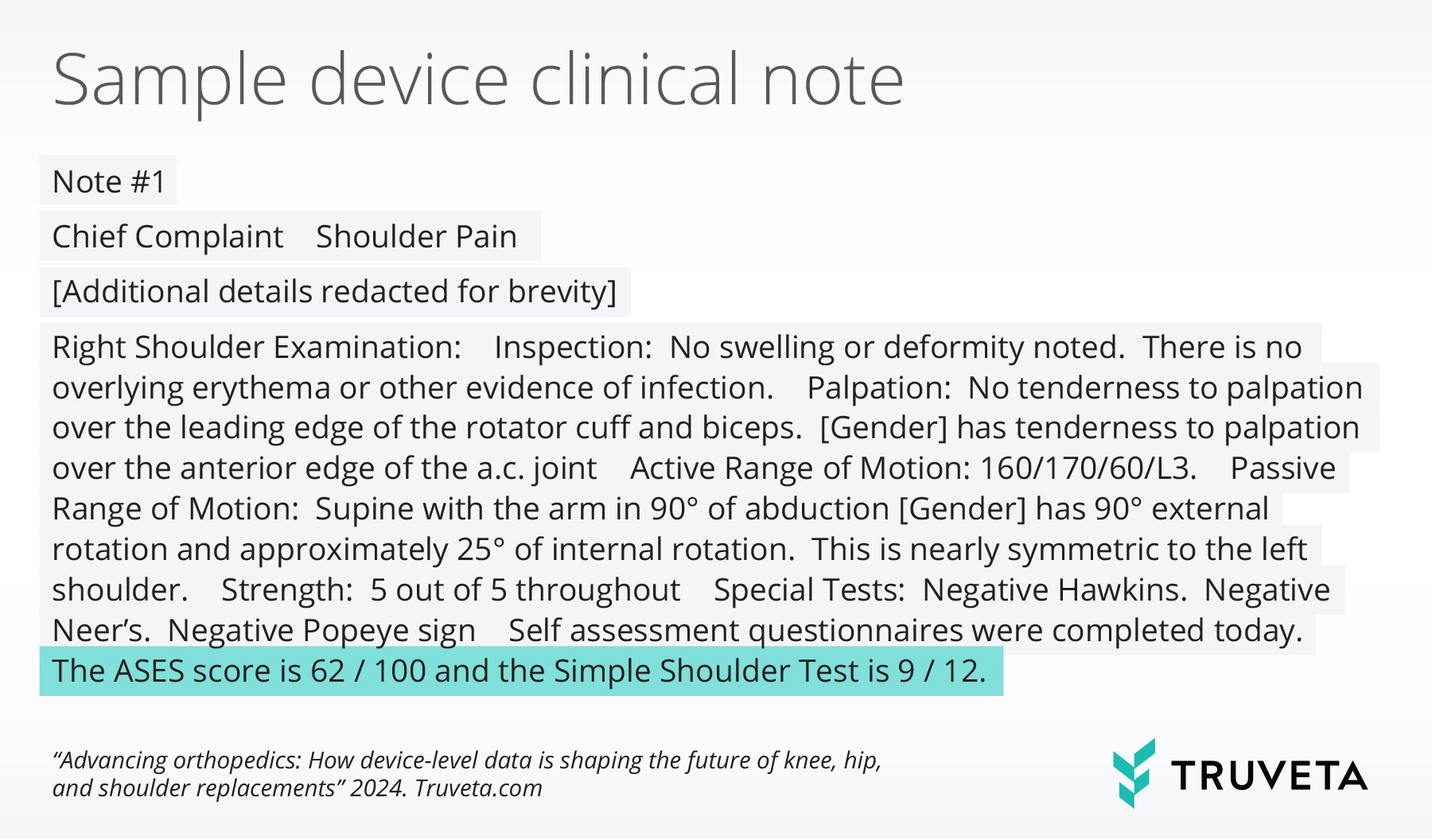The US market size for joint replacement is projected to balloon to nearly $38 billion by 2030, nearly doubling its 2022 value. The combination of an aging population, increasing rates of osteoarthritis and obesity, along with advancing technology, are all contributing to surging levels of orthopedic procedures (led by knee, hip, and shoulder arthroplasty). These procedures are critical to millions of patients’ quality of life.
Unfortunately, standard outcomes data often limits orthopedic research to broad insights, such as overall success rates, average recovery times, or general complication rates. With Truveta, orthopedic researchers can access device-level insights and patient-reported outcomes from the most complete, timely, and clean regulatory-grade EHR data available.
With Truveta Data, orthopedic researchers can explore use cases such as:
- Analyze different behaviors or comorbidities impacting the longevity of implants
- Monitor revision surgery rates by product, geographic region, or demographics
- Track how specific implant models perform in patients with varying severity of disease
- Study whether minority groups are less likely to receive more advanced devices
- Create predictive models to identify patients at high risk of adverse events
The power of integrated clinical notes and images
Truveta receives all clinical notes written during a patient’s care, where nearly 80% of data relevant to research is hidden. The Truveta Language Model extracts data from notes at scale, including details such as adverse events, symptom severity, and patient-reported outcome measures (PROMs).
PROMs play an increasingly critical role in orthopedic research and clinical practice. Integrating PROMS – such as the patient perspective on pain levels, mobility, and quality of life following arthroplasty procedures – with device-level EHR data allows for a more holistic view of patient outcomes.

Truveta Data also includes the largest collection of medical images integrated with EHR data, enabling researchers to connect visual diagnostics with clinical outcomes and device performance. When combined with EHR data, including patient history, surgical details, and device-level information at the unique device identifier (UDI) level, researchers can study anatomical changes that occur post-surgery, track implant positioning, and correlate these findings with patient outcomes and complication rates.
Orthopedic population preview
Inclusive of more than 100 million patients across a growing collective of 30 health systems, Truveta Data includes full patient medical records, notes and images, and is linked with claims, SDOH, and mortality data.
In leveraging Truveta’s comprehensive EHR data, orthopedic researchers can build custom populations to uncover groundbreaking insights. For example, Truveta Data includes over 330,000 patients who have undergone knee replacements, 286,000 patients with hip replacements, and 62,000 patients with shoulder replacements – representing the top devices in each category by market share and clinical relevance. See more details on these study populations below.
*Not exhaustive of all knee, hip, or shoulder orthopedic records in Truveta Data. Population samples are based on top devices on the market per specialty.

For an industry increasingly focused on evidence-based medicine, with robust clinical data and real-world evidence (RWE) required not only for regulatory approval but also for market acceptance and reimbursement, Truveta Data empowers researchers to better predict device performance, personalize treatments, and improve patient outcomes.
